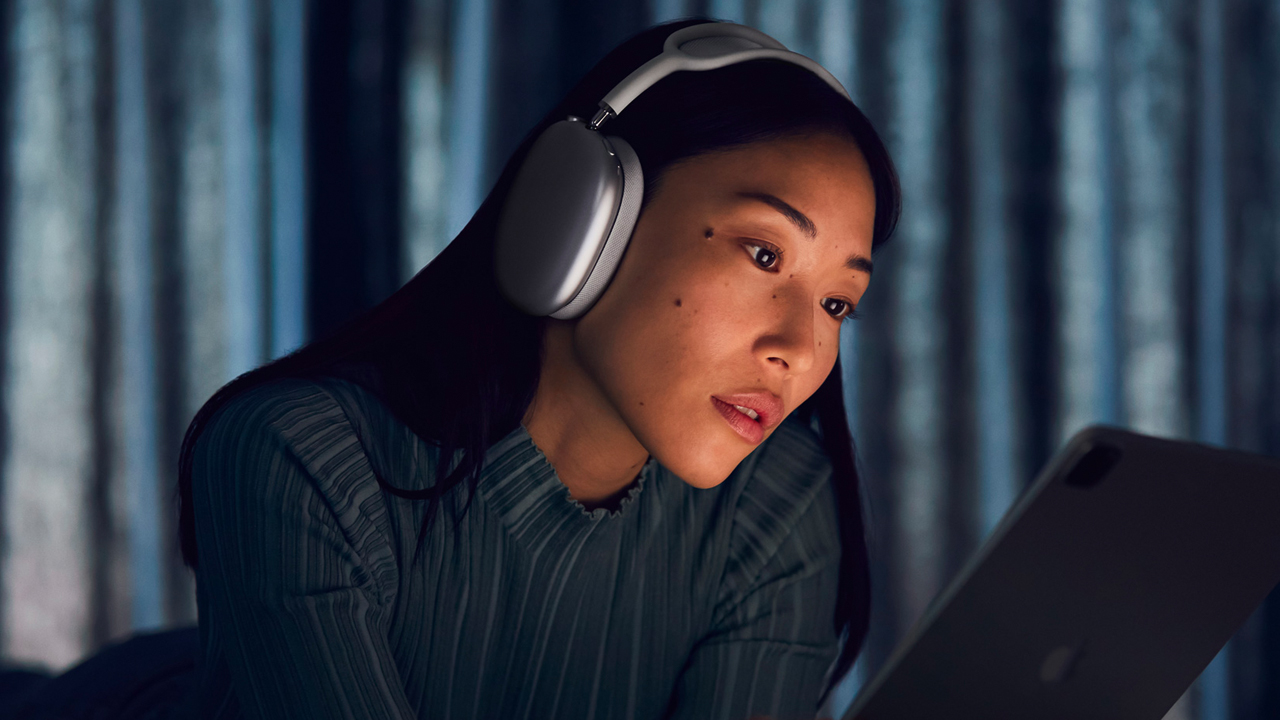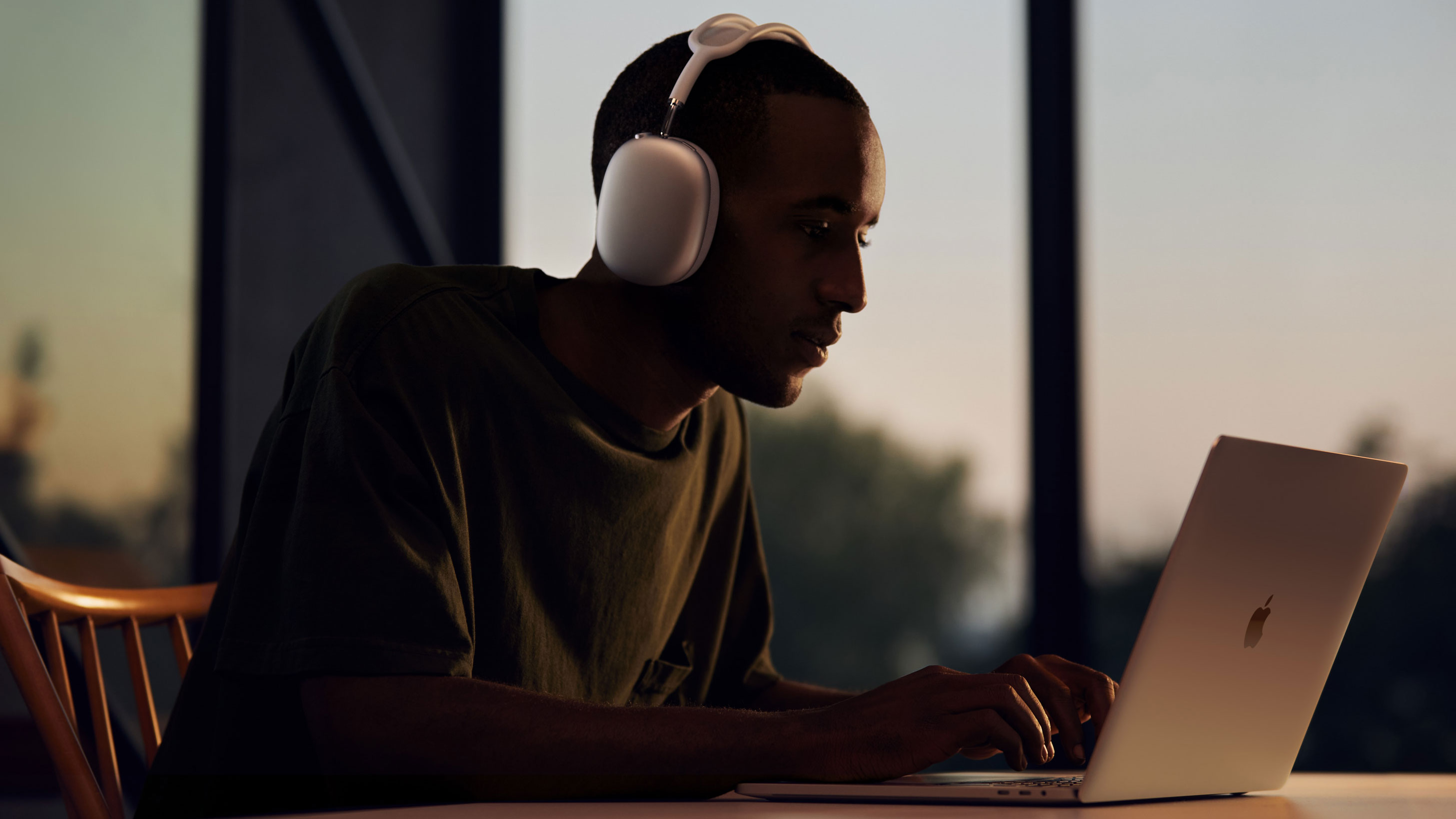The AirPods Max are the first Apple over-ear headphones, and they’ve been the subject of speculation for quite some time, with rumors that they would be among the most high-spec headphones ever released.
After a year of apparent delays, the Apple AirPods Max were finally announced on December 8 via a press release posted to the Apple newsroom; a surprisingly low-key release considering just how much hype surrounded the wireless headphones.
As expected, the AirPods Max have taken the internet by storm, dividing opinion with their unusual design and exorbitant price tag – but many of the rumored specs, including built-in artificial intelligence, head tracking, and clever gesture controls were missing.
Most surprising of all was Apple’s decision to eschew voguish touch controls in favor of a rather retro control dial, inspired by the Digital Crown on the Apple Watch.
Touch or swipe controls feature on many of the best over-ear headphones you can buy today, including the Sony WH-1000XM4 and the Bose Noise Cancelling Headphones 700 – so why has Apple ditched them in favor of an old school dial?
- Read our hands-on Apple AirPods Max review
- Check out the best headphones you can buy in 2020
Walk before you can run
Touch-sensitive headphones have been around for a few years now, and allow users to control their music playback and settings using a series of gestures; for example, tapping the earcup once to pause your music, or swiping up to increase the volume.
It’s an increasingly common feature on both over-ear headphones and wireless earbuds, and in some cases, it works very well. In many others however, touch controls are more of a hindrance than a help.
First of all, touch controls require the user to memorize a host of different gestures, which can become quite convoluted, especially as headphones are becoming increasingly complex devices. How anyone is supposed to remember three taps to turn off noise cancellation, two taps to skip tracks, a swipe up to change the volume, a long press to summon your voice assistant and so on, is a mystery.

Not only that, but swipe and touch controls often don’t work as well as the manufacturer may have intended. There are often issues with sensors picking up the movement of your finger, or an annoying lag between your gesture and the resulting action.
Apple, with a design aesthetic that focuses on simplicity and user friendliness, seems to have realized the technology's current shortcomings.
The tech giant has always been reticent when it comes to implementing very new technology in its devices, often waiting for other manufacturers to try out new features and jumping in when it’s matured. Just look at 5G phones – Apple released its first 5G model, the iPhone 12 earlier this year, long after the likes of Samsung, Huawei, and Oppo, holding off until network coverage was more comprehensive.
A tactile design
There’s also something to be said about the aesthetic implications of opting for physical controls with the Apple AirPods Max; and what more, the implications of using a control dial that would look more at home on a watch.
Indeed, that’s where Apple got its inspiration, taking the Digital Crown from the Apple Watch and adapting it for the new over-ear headphones.
For Francois Nguyen, who designed the original Beats by Dre headphones and is now the Creative Director at frog Design (an agency best known for designing the first Apple Macintosh computer), the use of the control dial offers a kind of tangibility that evokes the audio devices of old.
Speaking to TechRadar he said, “I think taking the route of physical buttons and controls was the right choice. The tactile feel and feedback of a well-designed button or knob gives more precise control to the user with a much faster response [than touch controls]”.
“These controls also tap into the analog audio equipment vibe that may resonate with vinyl collectors”, he continues. With the vogue for vinyl and turntables showing no sign of slowing down, it makes sense that Apple would tap into the thirst for retro audio gear.

Harking back to analogue audio devices could also lend the Apple AirPods Max a sense of audiophile credibility, with the use of a dial specifically making it feel as though you can adjust the sound of the headphones very precisely. Watch dials, after all, are evocative of precision engineering.
While Apple has found success with the AirPods, we wouldn’t exactly equate the company with high end audio gear, and incorporating technical-looking controls implies a level of audio expertise that it just doesn’t have yet.
The over-ear headphones market is saturated with devices from brands that boast loyal fan bases and decades of audio heritage. Whether the use of physical controls will be enough to convince audiophiles of Apple’s sonic prowess remains to be seen, but it could go some way in persuading casual music listeners to regard the company as an authority in the field.
Of course, the use of physical controls alone won’t be enough to make the Apple AirPods Max a success. Take away the unusual design, and the Apple AirPods Max are almost identical to other noise-cancelling headphones on the market, as long as you discount features specific to the AirPods range, including Spatial Audio, Audio Sharing, and Automatic Switching.
There’s no telling how many people will be willing to fork out $549 / £549 / AU$899 for a pair of headphones that will likely offer a very similar experience to top-rated cans at half the price. In any case, the Apple AirPods Max had better sound very good indeed if the company wants to compete with the likes of Sony, Bose, and Sennheiser.
Are touch controls done for?
While Apple has opted for physical controls with the AirPods Max, we don’t think that this is the death of touch controls for over-ear headphones. After all, the true wireless Apple AirPods Pro feature a ‘capacitive force sensor’ in the stem, which when squeezed activates noise-cancelling / Transparency mode, or skips and pauses tracks.
It’s a design that makes sense for tiny true wireless earbuds – it’s not like there’s room to fit a dial anywhere on the AirPods. Plus, we know that Apple is looking into different methods of playback control for the future that go beyond even touch controls.
Earlier this year, Apple was awarded a patent that describes some of the cool features we could see in future AirPods Pro models, including the ability to control the true wireless earbuds with futuristic 'in-air gestures'.
The patent, which was spotted by Patently Apple, describes how in-air gestures – for example hovering a hand over the AirPods – could work alongside the touch controls already employed by the AirPods Pro, allowing you to trigger different actions.
As well as offering more ways to control the AirPods Pro, this kind of technology could make it easier to use them in situations where using the touch controls or voice control is difficult.
For example, while running, it can be tricky to accurately press down on the earstems, and making voice commands might not be desirable – or possible, if you're very out of breath.
Another possible benefit of this technology is that it could make using the AirPods easier for anyone who has difficulty with fine motor skills and may find the touch controls too fiddly to work.

While a patent is no guarantee that this technology will ever see the light of day, it’s clear that Apple has an interest in improving the way we control our headphones; but as with most new technologies, we daresay it will be a while before we see Apple implementing it with its own products.
In any case, we’re grateful that Apple knows not to walk before it can run, and it’s one of the reasons Apple products just... well, work. Whether that’s enough to set the Apple AirPods Max apart from its well-regarded competitors remains to be seen, but we’re certainly excited to find out.
from TechRadar - All the latest technology news https://ift.tt/3gMylj5








No comments:
Post a Comment